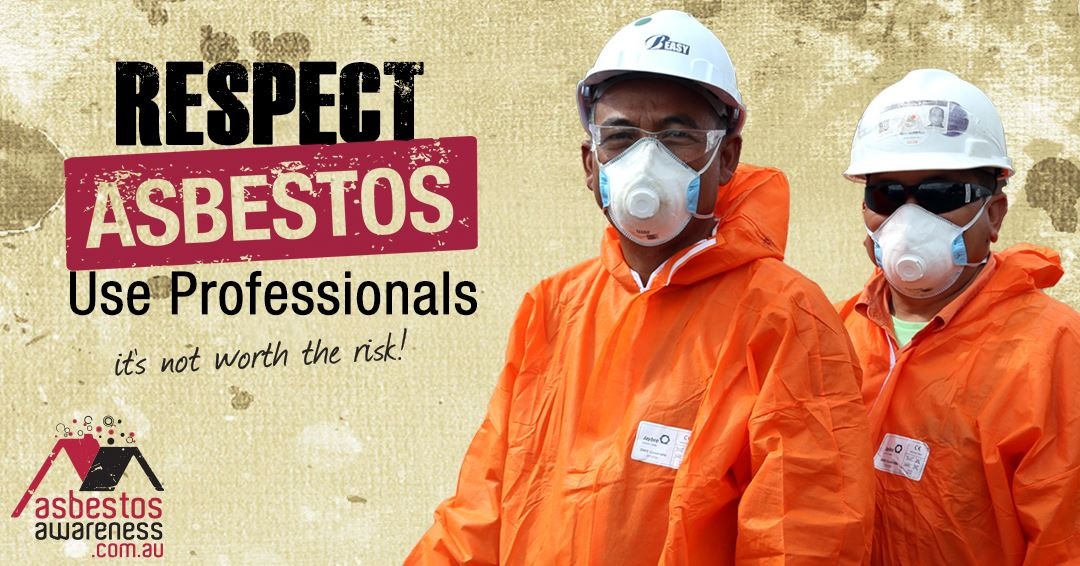Asbestos

Where asbestos can be found
Did you know that almost all Australian homes built before 1987 contain asbestos?
Asbestos is commonly found in:
- Fibro cement sheeting (flat and corrugated).
- Drainage and flue pipes.
- Roofing, guttering and flexible building boards (eg Villaboard, Hardiflex).
- Home roof insulation from the 1960s and 1970s.
- In stable materials such as bonded fibro which is in good condition, asbestos poses little health risk.
When asbestos becomes airborne due to broken, damaged or mishandled sheeting, it can cause serious health conditions including asbestosis, mesothelioma and lung cancer.
Visit the Asbestos Awareness Website for the latest information on dealing with asbestos in your home or at work.
Playgrounds and garden mulch
Council is aware of recent events where asbestos contamination has been found in mulched areas in parts of Sydney.
In regards to our operations, the predominate mulch used is certified playground mulch. We have checked our supply chain and our suppliers have provided assurance the mulch is certified accordingly. The other mulch we use in garden areas is chipped trees removed by our internal teams or approved contractors while undertaking work on Council owned trees.
There have been no discoveries of asbestos within mulch in Ku-ring-gai and staff are maintaining visual inspections of playground mulch and landscaped areas when maintenance is being undertaken.
Key facts about asbestos in the home
- Every home built or renovated in the years leading up to 1987 most likely contains asbestos.
- A conservative estimate is that 1 in 3 homes in Australia contains asbestos including brick.
- If asbestos is undisturbed it generally does not pose a health risk.
- Many Australians may unknowingly be putting their health and the health of their children, and neighbours at risk because they don’t really understand the dangers of working with asbestos or know where it might be found in and around their home.
- During renovations or the demolition of homes containing asbestos, asbestos fibres can be released into the air and be inhaled leading to asbestosis, lung cancer and mesothelioma.
- Not only homes constructed of fibro contain asbestos. Asbestos may be found in every room in the home. It may be behind wall and floor tiles, in walls, ceilings, under floor coverings including lino and carpet and around hot water systems.
- Only scientific testing of a sample of material by an accredited National Association of Testing Authorities (NATA) asbestos testing laboratory can confirm the presence of asbestos. For information on testing and accredited laboratories in your area call (03) 9274 8200.
- If asbestos materials are in good condition, paint them and leave them alone.
Tips for handling asbestos in your home
- If asbestos is disturbed your health and the health of your family could be at risk. DIY is not recommended where asbestos is present.
- When renovating or working in and around homes built before 1987, assume asbestos is present and take every precaution.
- If you’re not sure if asbestos is in your home you can have it inspected by a licenced removalist or a licensed asbestos assessor.
- Products made from asbestos cement include fibro sheeting (flat and corrugated), water, drainage and flue pipes, roofing shingles, guttering and floor and wall coverings.
- If left undisturbed asbestos materials in good, stable condition are unlikely to release dangerous fibres and pose a health risk. Generally, you don’t need to remove the asbestos. Paint it and leave it alone but remember to check it occasionally for any signs of wear and tear.
- There are legal requirements regarding asbestos management, its removal and disposal.
- Where asbestos fibres are friable (loose and not bonded into building materials), ONLY licenced friable asbestos removalists are allowed to remove it.
- The cost of asbestos removal by a licenced professional is comparable to most licenced tradesmen including electricians, plumbers and tilers.
- The cost of disposal at a lawful site is often included with the cost of removal by a licenced professional.
- If you must work with any material that may contain asbestos or remove asbestos yourself, protect yourself and your family and follow the necessary legal and safety requirements.
- These safety requirements include wearing specific protective clothing, the correct mask or breathing apparatus and ensure you minimise dust and dispose of it legally.
- Never use tools on asbestos materials as they will make asbestos fibres airborne. Tools include electric drills, angle grinders, circular saws and electric sanders.
- Never use high pressure water blasters or compressed air on asbestos.
More information about asbestos
The NSW Government through Workcover administers asbestos testing and enforces legislation that protects workers and householders.
Here are some links to websites that may be helpful:
Removal
Only licensed removalists are permitted to remove loose or friable asbestos or bonded asbestos in amounts greater than 10sqm. You can contact The Asbestos & HAZMAT Removal Contractors Association (AHRCA) on 8586 3555 to find an accredited removalist.
For advice on removing, disposing of or transporting asbestos phone the Environment Line on 131 555.